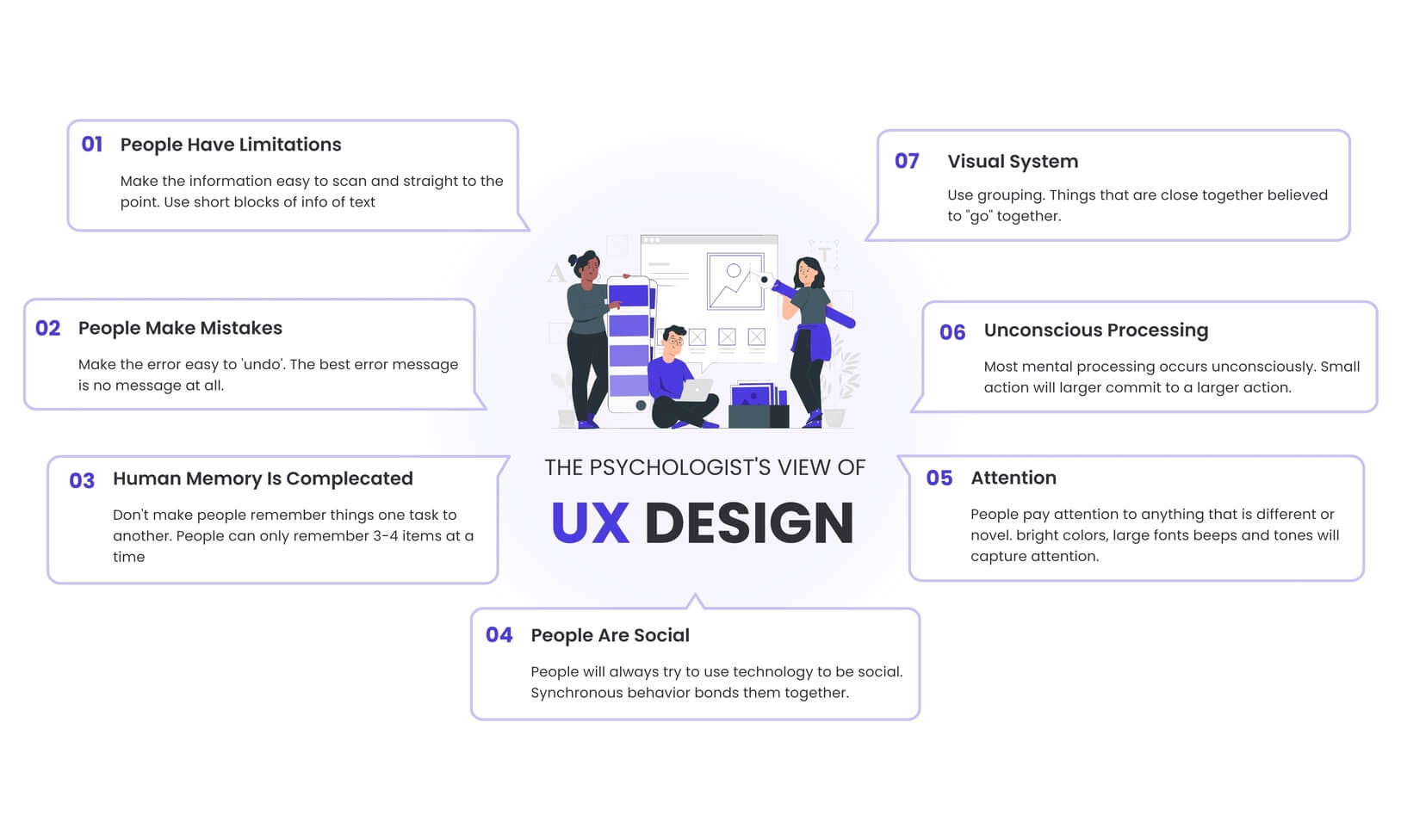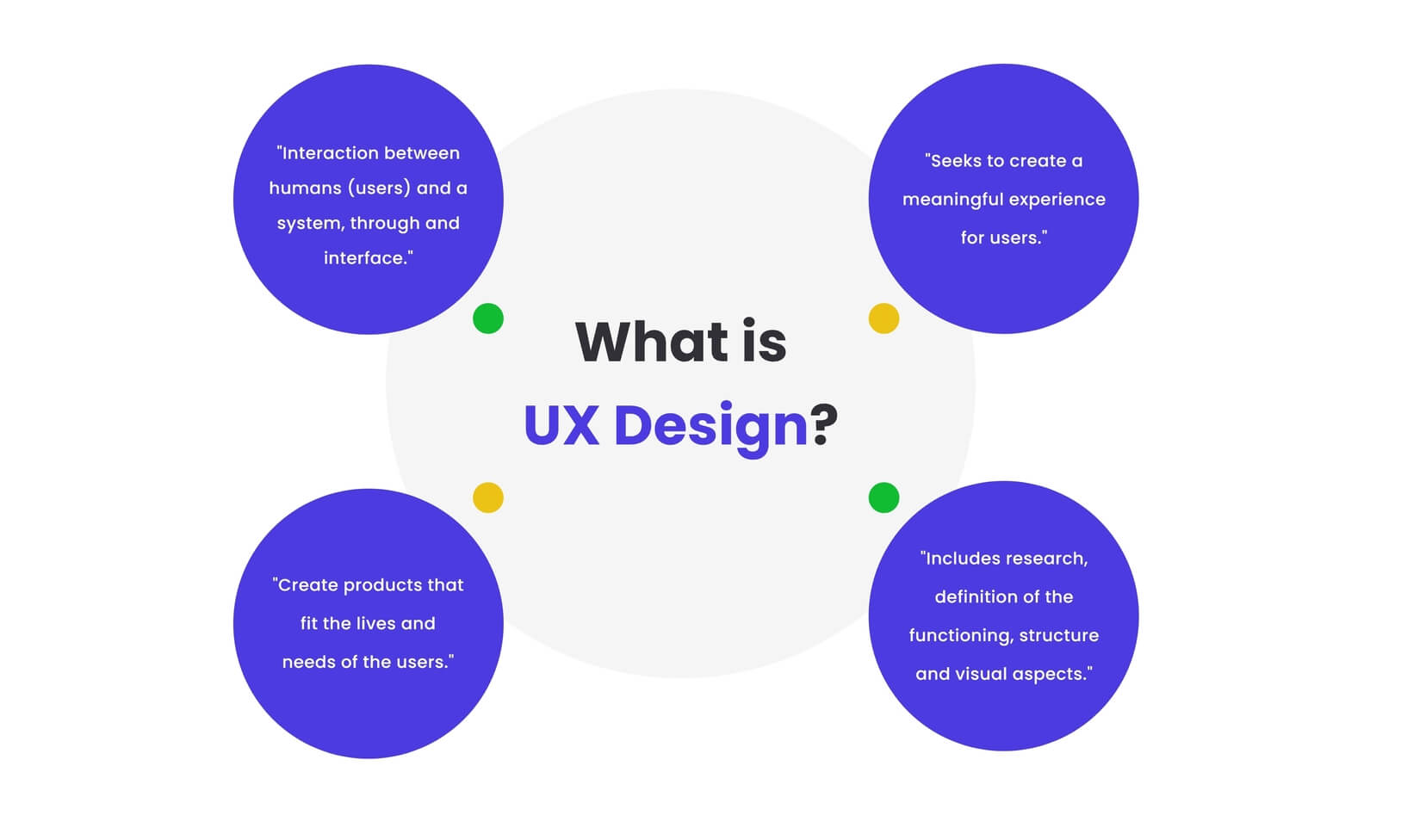We’ll go through the seven essential UX design principles and explain to you how to put them into practice here. As you begin to delve into the realm of app and web designs, you’ll soon come across the idea of User Experience (UX). UX design may have begun with Donald Norman’s The Design of Everyday Things in 1988.
Norman, who was Apple’s chief designer, utilized the book to highlight the complexities of designing things that are frequently ignored. UX design has evolved and altered since then, and it is currently the dominant method of thinking about user-led design.
Despite its prominence, the fundamental concepts of UX design are still poorly understood by many designers. In reality, there is an ongoing dispute over how to define the word. Many designers have a hazy idea that UX design is concerned with the user. But putting this concept into reality may be a bit more difficult.
What are Design Principles?
Design principles are broadly applicable laws, standards, inclinations, and design concerns to which designers apply discretion. Professionals from various fields, including physics, behavioral science, sociology, and ergonomics, laid the groundwork for design principles via their cumulative knowledge and expertise.
User experience (UX) design is critical for reducing cognitive burdens and decision-making time for users. According to the authors of the seminal book Universal Principles of Design, core principles should assist designers in finding methods to enhance usability, impact perception, boost appeal, educate people, and make successful design decisions in projects. To successfully use design principles, you must first understand your users’ problems. Also, you must clearly understand how they would accept your solutions.

What is the significance of these Principles?
The process through which design teams create meaningful and relevant experiences for consumers is known as user experience (UX) design. And this entails planning the whole acquisition and integration process, including usability, branding, design, and function. When you utilize a big company’s app or one of its products, you will come across UX design concepts. UX is also responsible for making an app or website simple and pleasant to use.
The 7 Most Important UX Design Principles for Successful Product Engineering
1. Emphasize on the user
The essential concept in UX design is “focus on the user,” which underlies all of the other ideas we’ll be covering in this post. This concept is important for UX design since it addresses a frequent problem in apps and website designs. As designers gain proficiency in dealing with sophisticated design frameworks, they may create products that are more focused on impressing other designers than delivering a wonderful experience to real-world consumers.
The most practical application of this concept to designers will be determined by the organization’s kind and size for which you work. Working closely with your UX researchers is essential if you have the luxury of a specialized UX research team. You may need to create your own user feedback methods. Whatever method you choose, user-centric design implies a continuous design and feedback process, where one process informs the other.
2. Consistency
Consistency is a more specific concept of UX design that is essential when it comes to creating a successful product. At the most basic level, consistency implies that your designs and functionality remain consistent across all of your products. However, it’s also essential to note that many of the most popular and successful apps and websites utilize similar user interface patterns, whether in the positioning of buttons or how menu systems “flow.”
3. Hierarchy
Another overlooked fundamental concept of UX design is the hierarchy. A hierarchical approach to design, at its most basic, is considering all of the functionality and data that your product will include and then translating this into a tree-like framework in which each element of your product flows “naturally” from the last. If properly executed, the pages of your app or website will flow so smoothly from one another that your hierarchy will be almost invisible.
4. The importance of context
One of the main insights given by the UX design method is that context is a critical factor in how people engage with your products. In this sense, the context implies paying attention to which devices will be utilized to visit your app or website, with a specific focus on the fact that mobile surfing is currently the main type of online traffic.
Contextual design entails paying attention to a variety of different variables. Your design may function well while you are sitting in a nice, quiet office, but your users may engage with your design in a different context: in their workplace, but also on their lunch break or in a loud club.
5. Give the user complete control
Another one of the most important UX design principles is putting the user in charge. A decade ago, there was widespread hesitation to offer consumers a high degree of control over the online sites and apps they used for fear of breaking them. One of the most important conclusions of two decades of UX research is that providing the user with more power leads to a better experience.
And this is not to suggest that you should give your users full access to your app or website. Too much information may be overwhelming for novice visitors. And your product should remain simple to use regardless of how many sophisticated features you provide.

6. Accessibility
Making your designs accessible involves making them usable by everyone, including individuals with impairments. Including accessibility in your design process is essential for at least two reasons: 1) It will offer a positive experience for your users; 2) Numerous laws compel you to provide equal access.
7. Testing for usability
The ultimate UX design concept is closely related to the previous one we discussed. Implementing a user-centric design approach entails engaging your users early in the design process, but your involvement with them should go much further. To guarantee that your products are usable by your customers, you must have a continual, rigorous usability testing methodology.
Instead, design is an iterative procedure in which you continuously strive to learn how people interact with your products and use this knowledge to enhance them. And this is especially essential for expanding businesses, whose apps or websites may rapidly become inoperable. They offer new functionality and, as they have additional content, their designs may rapidly suffer from sluggish performance.
You Can Have a Great UX Design with Us
After going through the UX design principles listed above, you’ll see that most of them stem from the first UX design concept: focusing on the user.
Assume that UX design can be confined to a single concept. In that case, it is as this. Product development should be viewed as an iterative design process in which user feedback is constantly incorporated. As a result, designers should strive for as much interaction with their consumers as possible and keep in mind that even the most beautiful design in the world is useless if your customers can’t use it.
We can assist you if you require expert UX designers to meet your customers’ needs. Treinetic has UX designers who have years of expertise working with both local and international customers. Please get in touch with us right away if you need any more information.

